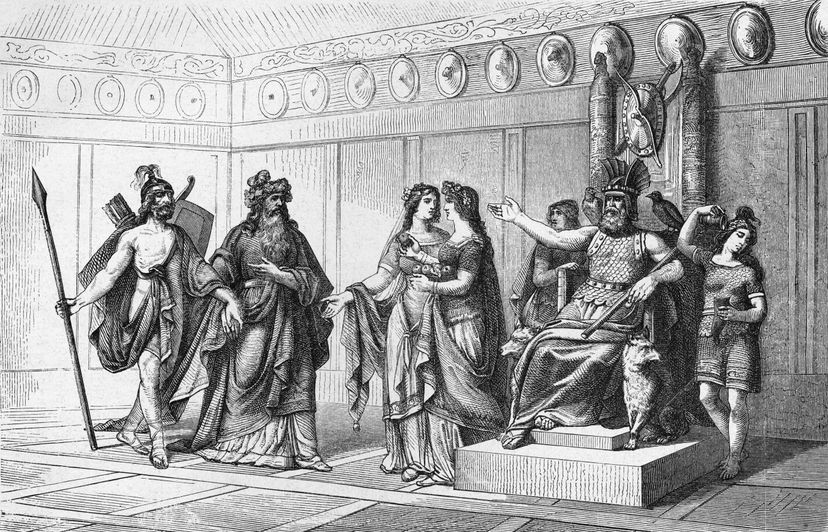
About This Quiz
The Vikings, or Norsemen, terrorized northern Europe from 800-1100 C.E. See how much you know about the myths and legends of these mighty warriors with our Norse mythology quiz!Norse warriors sought a place in Valhalla, where they could live among the gods.
Most of what we know about Norse mythology comes from two texts known as the Eddas, both of which were not written until the Norse had dropped their mythical beliefs in favor of Christianity.
The Eddas consist of "The Poetic", or elder, and "The Prose," or younger. The first of these is mainly poetry, while the second covers the mythology of the Norse gods.
Advertisement
Skald were the complex sagas and epic poems of the Norse from 900 to 1200 C.E. Combined with the Eddas, the skald serve as a record of Norse mythology.
Muspel, which means "world's end," was a fiery region to the south of the Norse world.
When Muspel met Niflheim, the world began - think of it as a big bang for the Vikings.
Advertisement
The first living thing according to Norse mythology was Ymir, a primordial frost giant.
After Ymir came a cow named Audhumla that generated four streams of milk to feed the hungry giant.
Odin destroys Ymir and uses his body parts to make the world - literally. Blood became rivers, and skin became land.
Advertisement
Odin fashions the first two humans out of logs, naming them Ask and Embla, meaning ash and elm.
The Norse version of heaven was Asgard, which was filled with palaces and halls, including Valhalla.
In Norse mythology, Ragnarok refers to an apocalyptic battle between the gods and the giants.
Advertisement
Balder, known as "the good" or "the beautiful," was Balder's favorite son, despite his lack of success and achievement beyond his looks.
Balder dies when he is struck by a mistletoe dart his blind brother shoots at him.
Bragi was the god of poetry and elegance and gave us the modern word "brag," meaning "to boast."
Advertisement
Freyr was the Norse god of agriculture and fertility, while his twin sister Freya was the goddess of marriage.
Frigg was not only Odin's wife, but also celebrated as the mother goddess and the ruler of the sky.
After losing her son to a mistletoe dart, Frigg promised to kiss all those who pass under mistletoe, giving us the tradition we follow today.
Advertisement
For unexplained reasons, legend holds that Heimdall has nine mothers. He is also Odin's son and is responsible for maintaining social order among humans.
The Norse referred to Earth as Midgard - the place where humans live - and believed that it was connected to heaven by a bridge.
Hel, the goddess of death and the underworld, ruled the dead in the Norse tradition.
Advertisement
Idun is the Norse goddess of immortality.
Idun relies on the golden apples of youth to help the gods and goddesses maintain their youth.
Loki is a well-known trickster. While he is friends with Odin, he is also the one who ultimately triggers the great battle of Ragnarok.
Advertisement
In a clear reference to Christianity's influence, Odin pierces himself with a spear and hangs himself from a great tree for nine days to learn wisdom.
Thor was ruler of the sky and the god of lightning and thunder.
Thor's mighty hammer, known as Mjolnir, was capable of destroying a mountain in a single swing.
Advertisement
Thursday was inspired by Thor, while Friday comes from the god Frigg.
Sigurd was the Norse King Arthur, perhaps best known for killing a dragon named Fafnir.
One prevalent Norse myth revolves around a dwarf who makes a gold ring that is cursed to doom any who possess it. "Lord of the Rings" anyone?
Advertisement